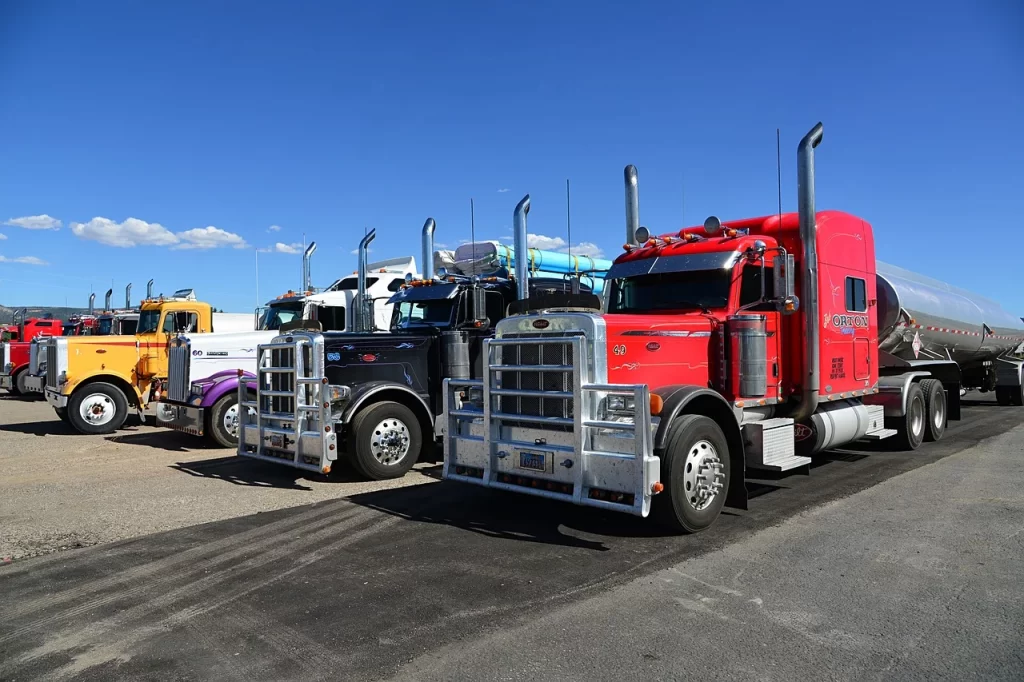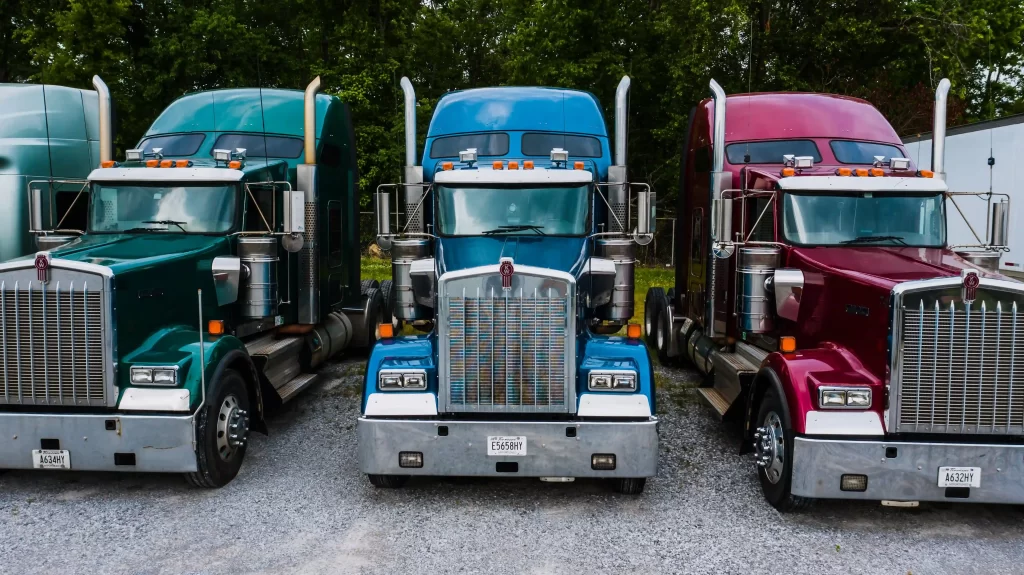
In the high-demand world of trucking, one of the most significant yet overlooked factors impacting today’s truckers is parking – more specifically, truck parking. The disparities between truck parking in the US and Europe are fascinating as they reflect each location’s unique regulatory frameworks, industry dynamics, and geographical characteristics. This article will explore these key differences.
The Trucking Industry in Europe
The European trucking industry functions quite differently to the American one. Transporting around 75% of Europe’s land freight, it is a crucial part of the continent’s economic infrastructure.
The highly evolved nature of European urban planning, where historical towns and cities require efficient logistics systems, has resulted in a well-established network of trucking routes. Without that, the Old Continent would quickly find itself in a supply chain crisis, as most of the European capitals and larger cities weren’t exactly built with truck traffic in mind. This stands in stark contrast to the American road system, a lot of which was purpose-built to accommodate the needs of automotive traffic.
European trucking is characterized by shorter transit times and distances compared to the US due to smaller country sizes and high population density. This means that a trucker can pass through multiple European countries in a single day, often dealing with various national regulations, road systems, and languages along the way. In the US, truckers also cross state borders and have to remain aware of the differences in DoT regulations for each state, but they are nowhere near as divergent as in Europe.
Importantly, the Old Continent follows a driver-centric model for its transportation industry. EU regulations mandate strict working time standards for drivers designed to ensure their well-being. Consequently, these rules directly impact truck parking and relevant facilities available across Europe.
Truck Parking Regulations: Side-by-Side Comparison
European and US regulations regarding truck parking are distinctly different. In Europe, under Regulation (EC) No 561/2006, drivers are required to take 45-minute breaks after every 4.5 hours of driving and rest for 11 hours daily. To accommodate these rules, the EU has enacted directives centered around securing quality parking facilities for drivers with an additional focus on safety parameters.
In contrast, the United States focuses on promoting efficiency within its supply chain framework. The Hours of Service (HOS) regulations authorize a maximum driving time of 11 hours within a 14-hour workday, following which a 10-hour off-duty period is required. However, the US Federal Motor Carrier Safety Administration (FMCSA) offers flexibility on these limits through options like the split-sleeper berth rule, enhancing operational capabilities but presenting its own challenges regarding appropriate parking spaces.
Is One System Better Than the Other?
It is difficult to provide a definitive, simple answer to this question. After all, with the trucking regulations in the US and EU focusing on two entirely different aspects of the industry, this means that truckers in both these regions face completely unique challenges that stem from how these regulations were designed.
In the US, for example, supply chains are more efficient than in Europe, but this prioritization of efficiency comes at the cost of driver well-being. The truck parking shortage is the most evident result of this. Truckers often have to resort to making rest stops in run-down, dangerous areas, or, in the most dire scenarios, even on the sides of roads, simply because there aren’t any spaces available. With so many semis on the road at any given time, drivers are forced to compete for spaces and look for an available spot for much longer than their dispatchers envisioned, leading to shipping delays that unavoidably impact the system’s efficiency, the main focus of American lawmakers and corporations.
The EU faces the opposite problem. Most rest stops in the region are equipped with top-of-the-line amenities, allowing drivers to fully recuperate after long hours on the road and get ready to get behind the wheel again. While reports from Europe suggest that the shortage problem is beginning to spread across the continent just like in the States, there’s still a long way to go before the situation becomes as dire as it is here. The prioritization of driver comfort and safety, however, radically affects delivery times and the expectations that business owners can set for their shipping departments.
To sum it up, it all boils down to your personal point of view. As a truck driver, you’re probably leaning towards the European model as the better one, as it focuses on giving truckers the time and facilities to maintain healthy and sustainable working hours. European supply chain managers and entrepreneurs, on the other hand, are probably jealous of the US’s more efficiency-focused system that ensures higher productivity.
Are Truck Parking Facilities Better in Europe or the US?
The nature and quality of the truck parking facilities differ between Europe and the US. European areas provide secure truck parking locations (STPs) scattered across the continent that align with the EU’s focus on ensuring driver safety and comfort during mandatory rest periods. These STPs often have amenities such as surveillance systems, secure fencing, lighting, sanitary facilities, and even Wi-Fi in some cases.
On the other side of the pond, American truck stops are large and often equipped with various amenities. Still, their primary focus leans toward offering conveniences like fuel, food services, and basic overnight parking. Safety provisions vary significantly among these locations due to a lack of standardized regulations.
Given the regulations and the nature of the industries, it’s difficult to judge one as better than another – they are merely different and designed for their respective environments and industry frameworks.
Truck Parking Europe: Is There a Truck Parking Shortage on the Old Continent?
While Europe has worked diligently to provide quality truck stops to meet regulatory mandates, much like the US, it currently faces a shortage of safe and secure parking spaces. The European Commission’s study revealed significant gaps in the availability of truck parking facilities throughout EU member states.
This deficit has been compounded by increased freight demand amid e-commerce growth leading to worsening working conditions for drivers as they struggle to find suitable areas for obligatory rest. The issue is under active consideration at both national and EU levels, highlighting the urgent need for increased investment in infrastructure improvement for truck parking.
Find the Parking You Deserve – Join the Truck Parking Club
Truckers in America face an endless stream of challenges, with the main one being the ongoing truck parking shortage. Unlike their EU counterparts, whose comfort on the job is being prioritized by the authorities, they are forced to be more self-reliant in ensuring a safe, comfortable work environment when on the road. But you don’t have to spend hours on end looking for a parking space that meets your needs – as a member of the Truck Parking Club, you’ll gain access to a wide range of safe, well-equipped places to safely take your next break.
Never worry about finding a parking space again
The information published herein is for general informational purposes only. Truck Parking Club does not make any representations or warranties about the completeness, reliability, legality, and accuracy of this information. Any reliance placed on such material is strictly at the user’s own risk. Truck Parking Club shall not be responsible for any losses or damages incurred in connection with the information published herein.





